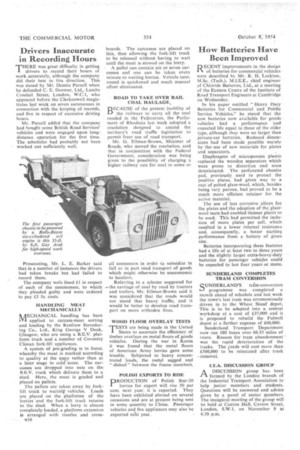How Batteries Have Been Improved
Page 44

If you've noticed an error in this article please click here to report it so we can fix it.
RECENT improvements in the design of batteries for commercial vehicles were described by Mr. R. H. Lockton, M.Sc. (Tech.), M.I.E.E., chief engineer of Chloride Batteries, Ltd., at a meeting of the Eastern Centre of the Institute of Road Transport Engineers at Cambridge on Wednesday.
In his paper entitled "Heavy Duty Batteries for Commercial and Public Service Vehicles," he stated that the new batteries now available for goods vehicles had a performance and expected life equal to those of the older type, although they were no larger than
• private-car batteries. Reduced dimensions had been made possible mainly by the-use of new materials for plates and separators.
Diaphragms of microporous plastic replaced the wooden separators which were prone to distortion and soon deteriorated. The perforated ebonite pad, previously used to protect the positive plates, had given way to a mat of pelted glass-wool, which, besides being very porous, had proved to be a much more efficient retainer for the active material.
The use of less corrosive alloys for the plates and the adoption of the glasswool mats had enabled thinner plates to be used. This had permitted the inclusion of more plates per cell, which resulted in a lower internal resistance and, consequently, a better starting performance from a battery of given size.
Batteries incorporating these features had a life of at least two to three years and the slightly larger extra-heavy-duty batteries for passenger vehicles could be expected to last four years or more.




























































































